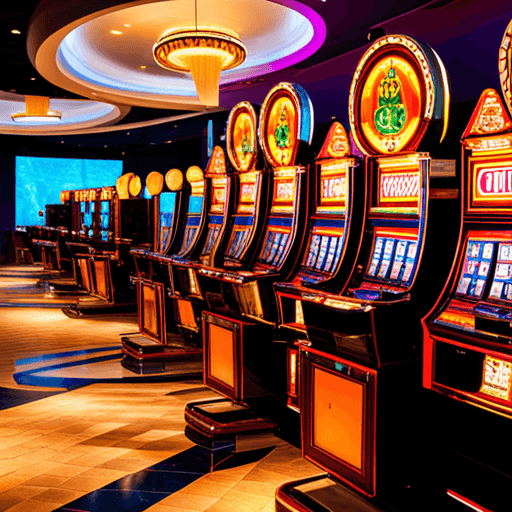When it comes to casino slots games, players frequently get enthralled by the shimmering lights, exciting themes, and the thrill of spinning the reels. But beyond the sparkle and excitement lies an essential concept that every gamer should be aware of: Return to Player, or RTP. This key metric holds great importance in determining the amount of money you can expect to receive back over time, influencing your gaming experience and strategy as you play.
RTP is usually expressed as a percentage and represents the mean amount of funds returned to players compared to the overall stakes. For instance, if a slot game has an RTP of 95%, it means that, on average, players get back ninety-five dollars for every $100 they stake. Understanding this concept can assist players in making educated decisions when selecting slots to enjoy, ultimately boosting their enjoyment at the casino. https://78win.tv/
What the meaning of RTP?
The Return to Player concept, often called RTP, refers to a significant element within gambling slots. It denotes the percentage of all wagered money which a specific slot is set to return to players over time. For example, if a slot has an RTP of 95%, this means that, hypothetically, players are likely to get back $95 for every 100 dollars placed in the long run. Knowing RTP aids players analyze the possible profitability of the various slots available. 78WIN COM
RTP does not serve as a surety of individual wins but instead a average determined across many spins. Each player’s experience might be different significantly as a result of the chance built-in in the games. A higher RTP suggests more favorable odds for the player, making it an essential factor to think about while picking the slots to play. However, even with a high RTP, there can be stretches in which players encounter losses, as randomness plays a significant role.
It is important to note that various slots have different RTP percentages. Some games may have a lower RTP as a result of a high level of entertainment or distinct elements, while others hold a higher percentage to attract more risk-averse players. Understanding RTP enables players to take wise choices about their gambling strategies and oversee their funds wisely while enjoying the adrenaline of casino slot games.
The Way Return to Player is Calculated
The Return to Player, or Return to Player, is a critical measurement in the world pertaining to casino slots titles. It indicates the proportion of all wagered funds that a gaming device is expected to pay back to players over time. Comprehending how RTP can be derived demands insight of the dual aspects of the slot’s architecture and its reward system. This return value is calculated through complex algorithms and statistical analyses executed during the game development process. Slot developers take into account various elements, which include the likelihood of successful combinations as well as the amount of payouts on each outcome.
To calculate this metric, the creators model a significant number of rotations on the slot machine. These simulations aid determine the average amount that on average, a gambler is likely to earn according to their wagers. For example, if a slot game has an average return of 95%, it suggests that, in theory, for every $100 bet, players can expect to receive ninety-five bucks in return over time. This value doesn’t represent how much a gambler might receive during a single play or over a few spins; instead, it reflects overall payout expectations.
RTP values tend to be usually released from the casino or slot developer. Players must always look for this data when choosing a slot game, because it can significantly influence their overall enjoyment. A greater return value typically means a better chance to recoup a segment of wagered money, even though specific sessions can vary considerably. Understanding RTP enables gamblers make informed decisions and improve their overall enjoyment within the world of slot games.
Importance of Return to Player in Casino Games
Understanding the RTP or Return to Player is crucial for any gamer involved in gambling on slots. Return to Player refers to the proportion of total bets that a game is engineered to pay back to gamers over the long run. A higher RTP means that players can look forward to receiving a bigger share of their bets back, making it an valuable factor for those attempting to enhance their gambling enjoyment. Knowing this figure helps players make smart choices about which games to play, as it can greatly influence their chances of winning.

Moreover, RTP has a crucial role in the overall equity and transparency of casino slots. Gamers are often attracted to games with higher RTP percentages because they provide a superior opportunity of success over the long term. Gaming establishments and software creators use RTP as a marketing tool to draw in gamers, guaranteeing they maintain a lead in the booming gaming industry. By understanding of RTP, players can choose games that align with their comfort level and gaming goals.
In conclusion, the idea of Return to Player promotes responsible gambling behavior. Recognizing that not all slots will provide immediate returns and that Return to Player is based on long-term play, players can regulate their expectations and playing habits effectively. This understanding enhances the enjoyment of slot games while promoting a more sustainable gaming environment. Gamers who comprehend the significance of RTP are likely to have a more satisfying experience and lessen the risks of problematic gambling behavior.